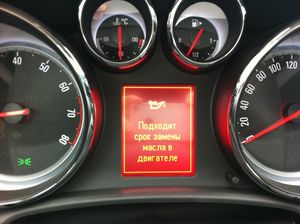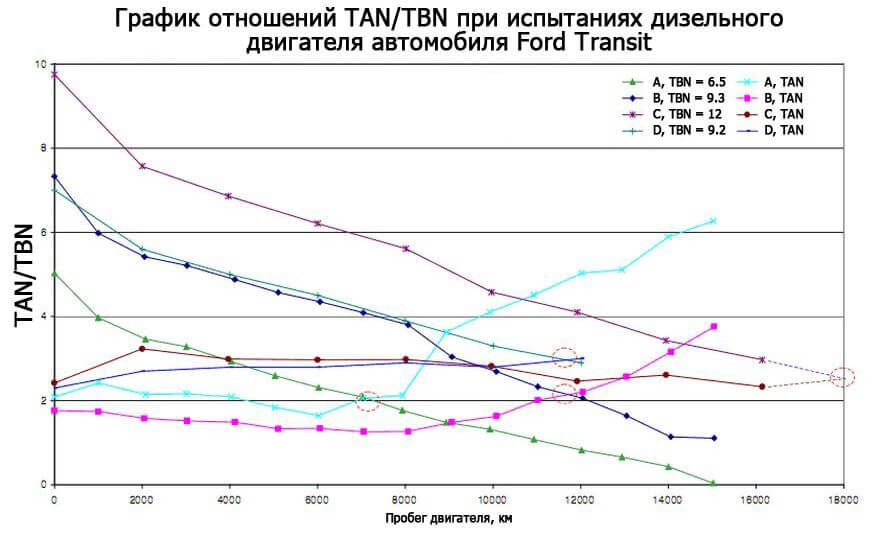After how many km to change the oil in the engine
Many car owners do not know how much to change the oil in the engine of their car or doubt the data provided by the manufacturer on the frequency of replacing consumables. And for good reason. To replace every 10-15 thousand kilometers is often not entirely true. Better at it be guided by the number of hours worked and the average speed. In answering the question of how often to change the oil in the engine, there are many components. Among them are the recommendations of the automaker, the operating conditions of the car (heavy / light, in the city / on the highway, often / rarely used), mileage before oil change and total mileage, technical condition of the car, oil used, and so on.
Also, the frequency of changing the oil in the engine is influenced by additional factors - the number of hours, engine power and volume, the time since the last oil change (even without taking into account the operation of the machine). Next, we will tell you in detail about how often to change the oil in the engine, how it happens, and other things that will surely be useful to you.
For those who do not want to go into details and understand everything in detail, we will immediately give an answer according to the shift interval: in urban conditions, the oil “works” 8-12 thousand, on the highway / light driving without traffic jams it works out up to 15 thousand km. The most accurate way to find out when to change can only be given by a laboratory analysis of oil recovery.
What affects the frequency of replacement
Each automaker in the manual for the car contains detailed information on when to change the engine oil. However, the fact is that this information is not always correct. As a rule, the documentation contains a value of 10 ... 15 thousand kilometers (in each individual case, the number may differ). But in fact, several factors affect the mileage between replacements.
10 indicators affecting the timing of engine oil changes
- Type of fuel (gas, gasoline, diesel) and its quality
- Engine capacity
- Brand of previously filled oil (synthetic, Semy-Synt, mineral oil)
- Classification and type of oils used (API and longlife system)
- Engine oil condition
- Replacement method
- Total engine mileage
- Technical condition of the car
- Operating conditions and modes
- Consumable quality
The manufacturer's instructions are not included in this list, since for him the service interval is a marketing concept.
Operating modes
First of all, the timing of changing the oil in the engine is affected by car operation. Without delving into the essence of the various transients, it is worth mentioning two main modes - on the highway and in the city. The fact is that when a car drives along the highway, firstly, the mileage runs much faster, and secondly, the engine cools down normally. Accordingly, the load on the engine and on the oil used in it is not so high. On the contrary, if the car is used in the city, then its mileage will be significantly lower, and the load on the engine will be higher due to the fact that it often stands at traffic lights and traffic jams with the engine running. Cooling will be insufficient.
In this regard, it would be more competent to calculate how much oil in the engine needs to be changed, based on engine hours, as it is done in cargo, agricultural and water engineering. Let's take an example. 10 thousand kilometers in urban conditions (with an average speed of 20 ... 25 km / h) the car will pass in 400 ... 500 hours. And the same 10 thousand on the highway at a speed of 100 km / h - only for 100 hours. Moreover, the operating conditions of the engine and oil on the track are much milder.
Driving in a metropolitan area rightly equates to driving on hard off-road in terms of how it destroys oil. This is especially true when its level in the crankcase is below average, and even worse when it is below the minimum level. Also remember that in hot summer weather, the oil is subjected to a much greater load due to high temperatures, including from hot road surfaces in megacities.
Engine size and type

What affects the frequency of oil changes
The more powerful the engine, the easier it is for it to survive load changes, as well as difficult operating conditions. Accordingly, the oil will not have such a strong effect. For a powerful motor, driving along the highway at a speed of 100 ... 130 km / h does not have a significant load, it will be below average. As the speed increases, the load on the engine, and hence on the oil, will change smoothly.
Another thing is a small car. As a rule, they are equipped with a “short” transmission, that is, the gears are designed for a small speed range and a range of operating speeds. Accordingly, small engines experience greater loads in critical conditions than powerful ones. When the load on the motor increases, the temperature of its pistons also increases, and the amount of crankcase gases also increases. This leads to an overall increase in temperature, including the temperature of the oil.
It is especially hard for small forced engines (for example, 1.2 TSI and others). In this case, the load is also supplemented by a turbine.
Additional factors
These include high temperature control (operating temperature), poor ventilation of the engine crankcase (especially when driving in urban conditions), the use of low-quality or unsuitable oil for this engine, the presence of dirt in the oil channels, a clogged oil filter, the operating temperature range of the oil.
It is believed that the optimal oil change interval in the engine is from 200 to 400 hours under various operating conditions, with the exception of maximum load, including driving at maximum speed and maximum speed.
Also of great importance is the type of oil used -, or completely. You can read about each of the mentioned species separately at the links provided.
Why you need regular oil changes

Dashboard display
What can happen to the car if you do not change the engine oil for a long time? To answer this question, you need to understand what functions it performs. Any oil consists of the so-called “base” and a certain amount of additives. It is they who protect the engine parts.
During the operation of the machine, and even its parking, there is a continuous chemical destruction of additives. Naturally, when driving, this process is faster. At the same time, natural deposits are formed on the engine crankcase, oxidative processes occur with individual components of the oil, its viscosity and even the pH level change. These facts are the answers to the question - why change oil at least once a year.
Some automakers and manufacturers of motor oils indicate how long it takes to change the oil in the engine not by mileage, but by frequency, usually by months.
And with a significant load, the described processes in the oil occur at an even greater speed. Especially at high temperatures. However, modern manufacturers are constantly improving the technology and chemical composition of their oils. Therefore, they are able to withstand pollution and high temperatures for a long time.
In many modern cars, the ECU constantly monitors how long it takes to change the engine oil. Naturally, this decision is made on the basis of an empirical methodology. It is based on actual data - the average number of engine revolutions, oil and engine temperatures, the number of cold starts, speed, and so on. In addition, the program takes into account errors and technical tolerances. So the computer only tells the approximate time when you need to change the engine oil.
Unfortunately, on the shelves of stores not only in the Russian Federation, but also in other CIS countries, a large number of low-quality or simply fake motor oils are currently being sold. And given that our fuel is often of poor quality, the frequency of oil changes still needs to be adjusted. In particular, if we talk about how many km to change the oil in the engine, then the recommended amount should be reduced by about a third. That is, instead of the often recommended 10 thousand, change after 7 ... 7.5 thousand.
Change the oil AT LEAST once a year, whether you operate the machine or not.
We list the causes and consequences of untimely replacement of engine oil:

- Deposit formation. The reasons for this phenomenon are the process of destruction of additives or contamination of the oil with combustion products in the crankcase. The consequences are a significant decrease in engine power, an increase in the content of toxic substances in exhaust gases, and their blackening.
- Significant engine wear. Reasons - oils lose their properties due to changes in the composition of additives.
- Increasing the viscosity of the oil. This can happen for the same reasons. In particular, due to oxidation or a violation of the polymerization of additives due to improper selection of oil. The problems arising from this include difficulties with oil circulation, significant wear of the engine and its individual elements. And the resulting oil starvation of the engine can lead to, in critical cases, even engine failure is possible.
- Rotation of connecting rod bearings. This is due to clogging of the oil channel with a thickened composition. The smaller its cross-sectional area, the greater the load on the connecting rod bearings. Because of this, they overheat and crank.
- Significant wear of the turbocharger(if available). In particular. high risk of damage to the rotor. It occurs due to the fact that the used oil has a significant impact on the compressor shaft and bearings. As a result, they are damaged and scratched. And besides this, dirty oil leads to clogging of the compressor lubrication channels, which can lead to its jamming.
Do not operate the machine with burnt and thickened oil. This exposes the motor to significant wear.
The problems described above are typical for machines operated in urban environments. After all, it is considered one of the most difficult for the engine. Next, we present interesting factual data that were obtained experimentally. They will help you decide after what mileage to change the oil in the engine.
Results of experiments with oils
Specialists of the well-known automotive magazine "Behind the Wheel" conducted a six-month study of several types of synthetic oils under the conditions of operation of cars in city traffic jams (at idle). To do this, the engines worked for 120 hours (analogous to a run of 10 thousand kilometers along the highway) at 800 rpm without cooling. As a result, interesting facts were obtained ...
The first is the viscosity of all engine oils during prolonged idling up to a certain (critical) moment significantly less than when driving “on the highway”. This is due to the fact that at idle there is a passage of exhaust gases and unburned fuel into the engine crankcase, where it all mixes with oil. In this case, some (insignificant) amount of oil may be in the fuel.
The value of the drop in viscosity of engine oil is about 0.4 ... 0.6 cSt (centistokes). This value is within 5...6% of the average level. That is, the viscosity is within the normal range. However, this only happens up to a certain point.

Clean and used engine oils
Approximately 70...100 hours(each oil is different, but the trend is the same for everyone) the viscosity begins to increase sharply. And much faster than when working in the “track” mode. The reasons for this are as follows. The oil is constantly in contact with the products of incomplete combustion (as described above), and reaches its critical saturation. The mentioned products have a certain acidity, which is transferred to the oil. Also affected by the lack of ventilation and low turbulence of the air-fuel mixture due to the fact that the piston moves relatively slowly. Because of this, the fuel combustion rate is below average, and the ingress of exhaust gases into the crankcase is maximum.
The widespread opinion that a large amount of dirt is formed in the engine during idling has not been experimentally confirmed. However, the amount of high-temperature deposits was small, and the amount of low-temperature deposits was large.
As for the wear products, their amount is much greater for the oil operated in the “plug” mode than for the one that was on the “highway”. The reason for this is the low speed of the pistons, as well as the high operating temperature of the oil (lack of ventilation). As for waste, each oil behaves differently. However, it can be argued that due to high operating temperatures and an increase in density, waste will also increase.
Based on the information provided, we will try to systematize the data and answer the question of how many kilometers to change the oil in the engine.
Next, we will dwell on the question of how often to change the oil in the engine. As mentioned above, the recommendations of car manufacturers should be treated with a great deal of skepticism. Not to completely ignore them, but amend. If you drive a car only in city conditions (according to statistics, there are a majority of such car owners), then this means that the oil is used in heavy mode. Remember that the less oil in the crankcase, the faster it ages. Therefore, its optimal level is slightly lower on the indicator probe.

How many thousand to change the oil in the engine?

Calculation of engine hours for oil change
Above, we wrote that it is more competent to calculate the frequency of oil changes based on engine hours. However, the complexity of this technique lies in the fact that it is sometimes difficult to convert kilometers into hours, and based on this information, get an answer. Let's take a closer look at two methods that allow empirically, however, it is quite accurate to calculate how much to change the synthetic (and not only) oil in the engine. To do this, your car must have an ECU that shows the average speed and fuel consumption over the last at least one thousand kilometers (the more mileage, the more accurate the calculations will be).
So, the first method (calculation by speed). To do this, you need to know the average speed of your car over the last several thousand kilometers and the car manufacturer's recommendations at what mileage you need to change the oil. For example, the mileage before an oil change is 15 thousand kilometers, and the average speed in the city is 29.5 km / h.
Accordingly, to calculate the number of hours, you need to divide the distance by the speed. In our case, this will be 15000 / 29.5 = 508 hours. That is, it turns out that in order to change the oil under these conditions, it is necessary to use a composition with a resource of 508 hours. However, in reality, such oils simply do not exist today.
We offer you a table that shows the types of engine oils and their corresponding engine hours according to API (American Petroleum Institute):
Let's assume that the car engine is filled with SM/SN class oil, which has a service life of 350 hours. To calculate the mileage, you need to multiply 350 hours by an average speed of 29.5 km / h. As a result, we get 10325 km. As you can see, this mileage is very different from the one that the automaker offers us. And if the average speed is 21.5 km / h (which is more typical for large cities, taking into account traffic jams and downtime), then with the same 350 hours we will get 7525 km of run! Now it becomes clear why it is necessary to divide the mileage recommended by the automaker by 1.5 ... 2 times.
Another calculation method is based on the amount of fuel consumed. As initial data, you need to know how much fuel your car consumes per 100 kilometers according to the passport, as well as this actual value. It can be taken from the same ECU. Suppose that according to the passport the car “takes” 8 l / 100 km, but in fact - 10.6 l / 100 km. Mileage for replacement remains the same - 15,000 km. We derive the proportion and find out how much in theory the car has to spend to overcome 15,000 km: 15,000 km * 8 liters / 100 km = 1200 liters. Now let's do the same calculations for actual data: 15000 * 10.6 / 100 = 1590 liters.
Now we need to calculate at what distance it is necessary to draw actual oil change(that is, how much the car will travel on a theoretical 1200 liters of fuel). Let's use a similar proportion: 1200 liters * 15000 km / 1590 liters = 11320 km.
We present to you an electronic calculator that will allow you to calculate the value of the actual mileage to an oil change using the following data: theoretical fuel consumption per 100 km, actual fuel consumption per 100 km, theoretical distance to oil change in kilometers:
However, the simplest and most effective method of checking is a visual inspection of the condition of the oil. To do this, do not be lazy to periodically open the hood and check if the oil has thickened or burned. Its condition can be assessed visually. If you see that the oil is dripping from the dipstick like water, then this is a sure sign that the oil needs to be changed. Another interesting method of checking is by spreading the composition on a napkin. A very thin oil will form a large and runny slick that will tell you when it's time to change the fluid. If this is the case, immediately go to a car service or carry out the procedure yourself. How to do this you can read in the corresponding.
How often to change the oil in a diesel engine
As for diesel engines, the same calculation logic applies here as for gasoline units. It is only necessary to take into account that the working fluid in them is subjected to greater external influences. As a result, it needs to be changed a little more often. In addition, domestic diesel fuel has a high sulfur content, which adversely affects the car engine.
Regarding the indications given by the car manufacturer (especially for Western manufacturers), they, like gasoline engines, must be divided by 1.5 ... 2 times. This applies to passenger cars as well as vans and light trucks.
As a rule, most domestic car owners of cars with diesel engines change the oil every 7 ... 10 thousand kilometers depending on the machine and the oil used.
Theoretically, oil selection is based on total base number (TBN). It measures the amount of active anti-corrosion additives in an oil and indicates the tendency of their formulations to form deposits. The higher the number, the greater the oil's ability to neutralize acidic and aggressive products formed during oxidation. For diesel engines, TBN is in the range of 11...14 units.
The second important number that characterizes the oil is the total acid number (TAN). It characterizes the presence in the oil of products that provoke an increase in corrosion and wear intensity of various friction pairs in a car engine.
However, before deciding how many hours to change the oil in a diesel engine, you need to deal with one nuance. In particular, is it possible to use engine oils with a low base number (TBN) in countries with low-quality fuel (in particular, Russian, which contains a large amount of sulfur)? During the operation of the engine, and, accordingly, the oil, the base number drops, and the acid number rises. Therefore, it is logical to assume that the intersection of their graphs at a certain vehicle mileage tells us that the oil has completely exhausted its resource, and then its operation only destroys the engine. We present to your attention the test graphs for four types of oils with different indicators of acid and base numbers. For the experiment, four types of oils were taken with the conditional names of the letters of the English alphabet:
- oil A - 5W30 (TBN 6.5);
- oil B - 5W30 (TBN 9.3);
- oil C - 10W30 (TBN 12);
- oil D - 5W30 (TBN 9.2).

As can be seen from the graph, the test results were as follows:
- oil A - 5W30 (TBN 6.5) - was completely used after 7000 km;
- oil B - 5W30 (TBN 9.3) - was completely used after 11,500 km;
- oil C - 10W30 (TBN 12) - was completely worked out after 18,000 km;
- oil D - 5W30 (TBN 9.2) - was completely used after 11,500 km.
That is, oil for heavily loaded diesel engines turned out to be the most resistant. What conclusions can be drawn from the given information:
- A high base number (TBN) is critical for those regions where poor quality diesel fuel (in particular, with high S impurities) is sold. The use of such oil will provide you with a longer and safer operation of the engine.
- If you are confident in the quality of the fuel you use, then it will be enough for you to use oils with a TBN value in the region of 11 ... 12.
- Similar reasoning is valid for gasoline engines. It is better to fill in oils with TBN = 8...10. This will give you the opportunity to change the oil less often. If you use oil with TBN = 6...7, then in this case, be prepared for more frequent fluid changes.
From general considerations, it is worth adding that in diesel engines it is necessary to change the oil a little more often than in gasoline ones. And it is worth choosing it, among other things, by the value of the total acid and alkaline numbers.
conclusions
Thus, each car owner must decide for himself how much to change the oil in the engine. This must be done according to individual circumstances. We recommend that you use the calculation methods for engine hours and gasoline consumption given above (including calculators). In addition, always visually assess the condition of the oil in the engine crankcase. So you will significantly reduce the wear and tear of the engine of your car, which will save you from having to carry out expensive repairs. Also, when replacing, buy high-quality oils recommended by the manufacturer.




